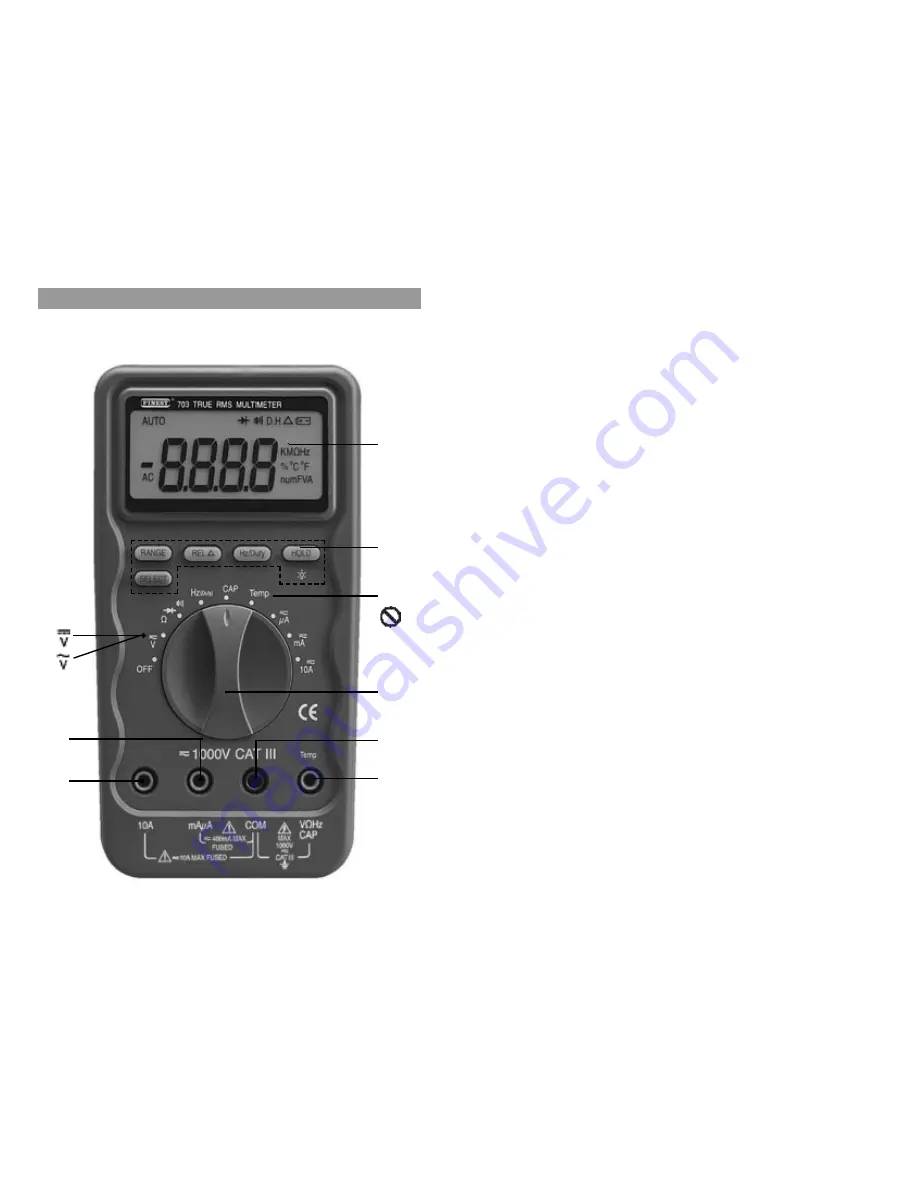
Although this manual describes the operation of both Model 701 and Model 703, all
illustrations and examples assume use of Model 703.
(1) 3-3/4 digit, 4000 count LCD display
(2) Push-buttons for special functions & features
(3) Selector to turn the power ON or OFF and select a function
(4) Input terminal for 10A (20A for 30 sec.) current measurement function
(5) Input terminal for milli-amps and micro-amps current measurement function
(6) Common (Ground reference) input terminal for all measurement functions
(7) Input terminal f or all f unct ions E XCEPT current (A, mA , µA ) measurement
functions
Glossary of Terms for Digital Multimeters
Average sensing RMS calibrated
RMS (Root-Mean-Square) is the term used to describe the effective or equivalent
DC value of an AC signal. Most digit al multimeters use average sensing RMS
calibrated technique to measure RMS values of A C signals. This technique is to
obtain the average value by rectifying and filtering the AC signal. The average
value is then scaled upward (that is, calibrated) to read the RMS value of a sine
wave. In measuring pure sinusoidal waveform, this technique is fast, accurate, and
cost effective. However, in measuring non-sinusoidal waveforms, significant errors
can be int roduced because of different scaling factors relating average to RMS
values.
True RMS
True RMS is a term which ident ifies a DMM that ac curately responds to the
effective RMS value regardless of the waveform shapes such as square, sawtooth,
triangle, pulse trains, spikes, and transient glitches as well as distorted waveforms
with the presence of harmonics.
( 1 )
( 3 )
( 6 )
( 7 )
( 4 )
( 7 0 1 )
( 5 )
( 2 )
( 7 0 1 )
3. CONTROLS AND INDICATORS
5
4

































